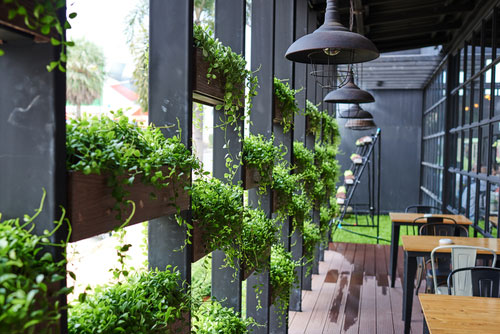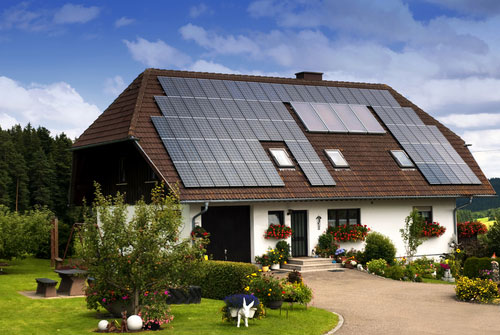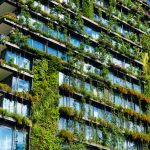Wait no longer and start ASAP renovating or building your place in an ecological way. According to Bentall Kennedy’s study, it’s cost-effective and after 10 years you can start getting your return on the investment.
The fact is: like most investments, sustainable development initiatives are always looking for interesting business models. Is this sustainability initiative profitable? What is the return on investment of a sustainable development strategy? After how long do you see the benefits? And what kind of benefits? Are questions that are usually present before starting green projects.
Sometimes, it’s precisely the absence of response to these questions that stops business leaders or communities from really getting into sustainable development, and becoming greener. Yet, there is one area where we are now certain that in addition to being ecological, it’s also a good investment: green buildings.
Definition: What Are Green Buildings?

Buildings represent a very polluting sector: between the construction of houses and tertiary buildings and their occupation and use (for heating, lighting, water…), they represent a considerable consumption of resources and energy. Therefore, it’s important to put in place strategies to reduce the ecological impact of buildings and make them more eco-friendly. In short, this is what green buildings are all about.
Specifically, green buildings usually have good insulation (allowing better temperature management) and efficient lighting and heating systems. They often also have renewable energy generators (photovoltaic panels) and water heating panels. These green buildings can also be made of eco-friendly building materials, reducing VOC (volatile organic compounds) emissions. Efficient plumbing fixtures are all common.
Re-imagining and re-designing how households work, by, for instance, reusing wastewater in toilet flushes to reduce consumption or having a place for composting food leftovers are also examples of the green building philosophy. In the end, the overall goal is that the energy efficiency, heating and water use of buildings become more efficient. This way they’ll consume less energy, heat, water and produce less waste.
There are a couple of labels today that certify buildings designed according to the rules of green building: for instance, in the United Kingdom, there is the BREEAM (Building Research Establishment Environmental Assessment Method) label and in the United States there’s LEED (Leadership in Energy and Environmental Design). According to a study conducted over 10 years by the real estate giant Bentall Kennedy, these certifications can bring in a lot of money.
Green Buildings Boost Property Value Of Properties
Indeed, the study finds that, on average, certified buildings have a higher occupancy rate than non-certified buildings: + 4% for LEED-certified buildings, or + 9.5% for office buildings. Energy-Star certified (American energy efficiency label) buildings are also better rented than those with no certification (+ 3.7% on the rental price for LEED-certified buildings).
This means certified buildings are easier to rent – they stay less idle, which reduces costs for real estate operators and owners. And they can also be rented for a more expensive price whose value is offset by lower energy, water, and heating consumption for tenants.
But that’s not all: the study remarks an increase in the property value of certified green buildings: if it goes to resale, it’s worth 8 to 10% more compared to original property value. In this way, investing in a green building is a profitable initiative for house owners in the short and long term – whether the prospect is renting or selling.
When Ecology And Financial Benefits Walk Hand In Hand

Yes, green buildings and houses are a good financial bet. But above all, they’re ecological investments too! When we talk about ecology, we also talk about savings. And in fact, certified sustainable buildings (whether in LEED, BREEAM or other certifications of the same type) are designed to save resources: energy, water, heat… So using systems that combine better insulation, a smarter and more economical electrical system or lighting specifically designed to optimize light, sustainable buildings can reduce expenses.
According to a report published by the World Green Building Council, savings in sustainably constructed buildings can be very significant: from 25 to 35% of energy savings, and up to 39% of water-savings compared to conventional buildings. For an initial construction cost increase of $3 to $5 per square foot, savings could be as much as $6 on resource savings and almost $8.50 on maintenance and repairs. In total, after 20 years, the savings will probably have amortized 2 to 3 times the initial investment.
In the end, green buildings are therefore both environmentally sustainable and economically profitable! Sustainable constructions look like a real opportunity for both businesses and individuals to reduce their impact on the environment while making money. Though initial construction costs may be more expensive, lower operating and energy costs indicate that green buildings offer a long-term return on investment.
Image credits to solar on Shutterstock, skyscraper on Shutterstock and architecture on Shutterstock

